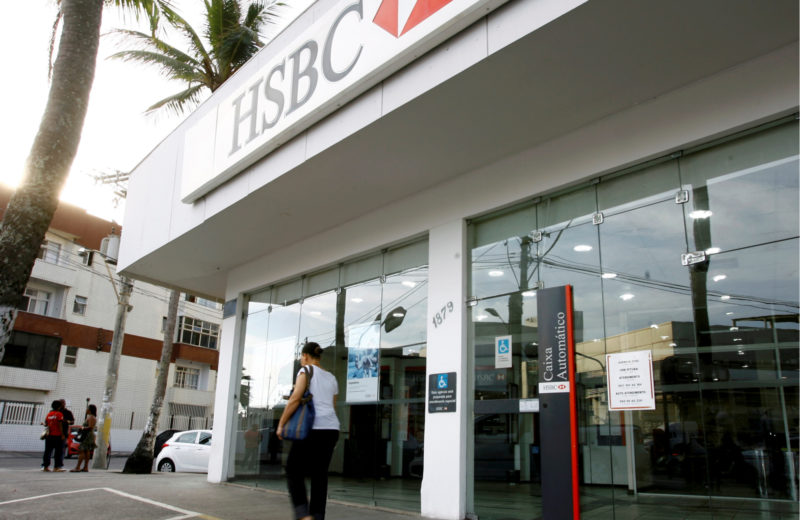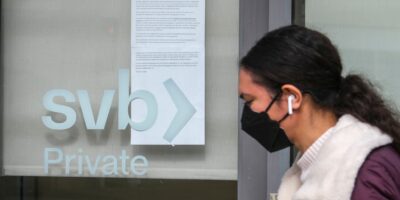Banking the Unbanked: Lessons from the Developing World

Access to financial services, or “financial inclusion,” has long been recognized as a critical step towards escaping poverty. Having a bank account enables people to protect their savings, diversify risk, lower transaction costs and access credit to invest in their human or physical capital.
Financial inclusion has become a top priority for international agencies like the World Bank and the IMF, as well as for nonprofits like the Bill and Melinda Gates Foundation, which also has donated millions to fund financial inclusion initiatives across the world.
Although these efforts have largely focused on the developing world, financial inclusion has increasingly become a policy concern in the U.S. Despite being one of the world’s richest nations, a surprisingly large share of the U.S. population lacks access to formal financial services. In 2017, the FDIC reported that roughly 6.5 percent of U.S. households (8.4 million households; 14.1 million adults and 6.4 million children) were “unbanked,” meaning that no member of the household held a checking or savings account at a formal financial institution. Another 18.7 percent (24.2 million households) were classified as “underbanked,” meaning that they had an account at an insured institution but also obtained financial services from outside the formal financial system. Although unbanked rates are highest in rural areas, most of the unbanked live in urban centers. These rates are particularly high in minority and immigrant communities. African Americans (16.9 percent) and Hispanics (14 percent) were four to five times more likely to be unbanked than Whites (3.0 percent) and Asians (2.5 percent).
While these figures aren’t high relative to less-developed nations, they are high relative to other OECD nations. In Western Europe, the financial inclusion rate exceeds 97 percent. Canada enjoys a financial inclusion rate of 99.7 percent.
Numerous proposals have been put forward recently for how the U.S. government can reduce financial exclusion. Two of the most prominent – postal banking and FedAccounts – are discussed below. Here I examine what lessons policymakers can draw from a proven, market-led alternative for reaching the unbanked: mobile money. Over the past decade, mobile money has expanded financial access to hundreds of millions of people across the developing world. In this article I consider what lessons policymakers might draw from these successes and examine whether mobile money can achieve similar success at reaching the unbanked in the U.S.
Two Popular Proposals for Reaching the Unbanked: Postal Banking and FedAccounts
Two specific proposals for combating financial exclusion have recently garnered media attention. The first is to revive the postal savings system that existed from 1911 to 1967. Postal banking allows post offices to double as small-scale savings banks. It targets low-income citizens, particularly in rural areas, who lack access to a nearby bank branch, cannot afford bank fees, or have too little savings to open an account. Postal savings accounts require no minimum balances and minimal fees. Any citizen could make deposits and access basic financial services at any of the 30,000 post offices around the country. Postal banking has been endorsed by several economists ,law professors and 2020 presidential candidates like Elizabeth Warren and Bernie Sanders.
While postal banking involves recycling an old idea, a second and more novel proposal that has gained traction recently is to enlist the Federal Reserve in the fight against financial exclusion.[1] In a 2018 working paper “A Public Option for Bank Accounts (Or Central Banking for All),” legal scholars Morgan Ricks, John Crawford, and Lev Mandand argue that policymakers should expand the Fed’s mandate to include achieving universal financial inclusion. According to the plan, the Fed would no longer restrict its clientele to banks. It would allow the public to open transaction accounts, called FedAccounts.[2] FedAccounts would be open to all legal residents and firms, with no fees or minimum balance requirements. The Fed would invest deposited funds in the assets it typically buys, namely U.S. Treasuries. It would pay depositors the same interest on reserves (IOR) rate that commercial banks receive on their balances at the Fed (currently 2.4 percent per year, well above the average annual rate on checking accounts of 0.06 percent).
Since most transactions today are conducted without cash, FedAccounts would be largely digital. This idea is somewhat similar to another idea that has been explored by central bankers and IMF officials (and addressed at the Alt-M blog) that calls for central banks to jump into the digital payment and/or blockchain game by offering the public “central bank digital currency” (CBDC). However, to accommodate whatever demand there is for cash deposits and withdrawals, the authors propose installing “Fed ATMs” at post office branches across the country and enlisting trained postal workers as clerks.
Would these proposals pursued separately or in tandem reduce financial exclusion? It’s certainly possible they might provide some benefits to certain segments of the population. But are they the most effective way to reduce financial exclusion? The answer to that question is very likely no.
To see why, it helps to understand why people are unbanked in the U.S. According to an FDIC survey, the three leading reasons cited by unbanked individuals for why they didn’t have a bank account are not having enough money to justify opening an account (52.7%), lack of trust in banks (30.2%), and privacy concerns (28.2%).
Postal banking or FedAccounts wouldn’t do anything to address the first and third concerns. In theory, they might make some headway amongst those who distrust banks (reason two). But the same people who don’t trust banks are just as likely (if not more so) not to trust government. This is especially true for the large share who cite privacy as their main concern. A large share are unbanked by choice because they operate in the underground economy, which estimates say comprises somewhere between 10 and 20 percent of GDP. Bankers report that increased federal reporting and documentation requirements have scared off many of these potential customers.
What about account fees? Only about one-in-five survey respondents cited fees as a factor, with fewer than 10 percent citing them as a major factor. Here it is at least plausible that low fee postal banking or FedAccounts could attract some unbanked customers. That said, there are other ways to reach this segment of the unbanked through low-cost private accounts that don’t require costly new government initiatives. These private alternatives are discussed more in the next section.[3]
It also helps to understand the demographic characteristics of the unbanked. Since the majority of the unbanked live in urban centers, reaching the unbanked cannot be reduced to simply eliminating “banking deserts” in rural areas, as many postal banking advocates suggest. A recent study by the Banking Policy Institute (BPI) found that contrary to the increasing concerns about banking deserts (defined by the Federal Reserve as a location without a bank branch within a 10-mile radius) “almost all of the U.S. population has access to a bank branch.”
It also found that the percent of Americans living in a banking desert has not changed over time, despite concerns about decades of bank mergers and consolidations over the past 30 years. Most surprisingly, the study found that those living in low-income and minority areas are more likely to have better access to bank branches than those living in middle- or upper-income areas. For the urban unbanked, the problem isn’t that there isn’t a bank in their neighborhood. More often it is that they believe they don’t have enough money to justify opening an account, or that there is a cultural reluctance within their community (due to a distrust of banks, financial illiteracy, etc.)
FedAccounts also don’t provide a solution to this problem. Most of the unbanked in both urban and rural areas already have access to low-cost traditional and digital banking services. In fact, the rise of digital banking and a strengthening economy are largely responsible for explaining why the percentage of Americans who are unbanked has fallen from 7.7% to 6.5% over the past decade. As the FDIC report notes (pp. 18-19), the sharpest declines in financial exclusion in recent years have come from younger households, in large part because of the increasing popularity and accessibility of digital banking accounts. Among households aged 15-24, the unbanked rate has fallen from 15.7 percent in 2013 to 10 percent in 2017.
Technological advances in digital banking have played no small role in reducing financial exclusion both in the U.S. and across the globe. However, there are good reasons to believe that regulations have prevented these innovations from reaching their full potential in the U.S. The best examples of how innovation-spurring policies can expand financial access can be found in the developing world – Sub-Saharan Africa (SSA), in particular. The recent success of private innovations like mobile money in the developing world suggests that the best approach might be to make it easier for private companies – particularly nontraditional financial service providers like telecoms – to develop innovative products capable of reaching the unbanked. Proposals like postal banking might be useful in tandem with these private alternatives, but they are unlikely to achieve much success on their own.
The Mobile Money Alternative: A Market Approach to Financial Inclusion
The best example of this market-oriented approach is the mobile money revolution that has swept across Sub-Saharan Africa over the past decade. The most popular case study is M-PESA in Kenya.
M-PESA was launched in 2007 by Safaricom, Kenya’s largest telecom company. Working in conjunction with banks, NGOs and microcredit organizations, Safaricom designed M-PESA to serve as a conduit connecting its millions of unbanked customers to formal financial services. M-PESA enabled customers to cheaply and securely send and receive payments anywhere in Kenya as easily as sending a text message. More importantly, it allowed customers to save and withdraw money from any of Safaricom’s thousands of retail branches throughout the nation.
At its core M-PESA is a payment platform and mobile wallet, not a bank account. One reason why M-PESA was allowed to proceed on such a lightly regulated basis is because Safaricom itself did not try to take on the role of a bank by making loans or directly offering formal banking services. It therefore didn’t have to apply for a banking license or abide by the more onerous regulations that apply to traditional banks and payment service providers. Instead Safaricom partnered with local banks to offer a fuller array of banking services through its mobile platform like interest-earning savings accounts and micro-credit to customers who wanted more than the simple payment service and mobile wallet that M-PESA initially offered.
For the first time customers in remote areas were able to cheaply and safely access basic banking services without having to make the trek to a traditional bank in an urban center. Safaricom also did not charge customers any start-up fees or require any sort of credit history to open an account. All that was required initially was a Safaricom account (which more than two-thirds of Kenyans had) and a valid ID. M-PESA’s revenue primarily came from charging transaction fees that typically ranged between 1-3%, making it significantly cheaper than the 10-25% fees that were charged by existing payment providers in Kenya like the post office and Western Union.
Although the technology behind M-PESA had existed for more than a decade, the true catalyst for the mobile money revolution came in 2007 when Kenyan regulators changed their laws to allow nonbank firms like cell phone companies to provide mobile financial services. They also allowed telecoms to offer small-scale banking services from retail shops located throughout the country. This “agent banking” model was critical because, with thousands of retail outlets located all across Kenya, telecoms had an advantage over banks in accessing low-income people in rural areas. Perhaps most importantly, regulators relaxed know-your-customer and anti-money-laundering laws (KYC-AML) that made it too costly for banks to serve the unbanked.
The results of these “enabling” policies speak for themselves. Over the past decade, Kenya has become the world leader in mobile money with more than 30 million accounts provided by six telecoms. Banks have also partnered with telecoms to offer a full array of banking services through the mobile money platform. Mobile banking apps like M-Shwari have connected more than 18 million Kenyans to savings accounts and bank credit. Thanks to these innovations, the percentage of adults using formal financial services in Kenya nearly tripled from 26 percent to 75 percent between 2007 and 2016 thanks to the widespread adoption of mobile money.
It didn’t take long for other African nations to begin emulating Kenya’s successful model of deregulation. Their results have been equally impressive. In 2011, the World Bank partnered with the Bill and Melinda Gates Foundation to launch the Global Findex Database to help track progress towards achieving the United Nations Sustainable Development Goal of universal financial access by 2020. According to the 2017 report, Sub-Saharan Africa experienced the most rapid increase in financial accounts of any region. The share of adults with a financial account jumped from 24 percent in 2011 to 38 percent in 2017. Most of this increase can be attributed to the rise of mobile money in the nations that have embraced an enabling approach to regulation. Twenty-one percent of households in Africa rely on mobile money, the highest ratio in the developing world. In Kenya, Tanzania, Uganda, and Rwanda – the nations which are most commonly cited for embracing an enabling regulatory approach – more than two-thirds of the combined adult population use mobile money daily.
Although sub-Saharan Africa remains the epicenter of the mobile money revolution, mobile money has recently begun to spread globally. In 2018, there were 866 million registered mobile money accounts from 272 deployments in 90 countries. The most rapid growth over the past two years has been in Asia and Latin America, which now has a combined 275 million accounts.
Can Something Like Mobile Money Work in the U.S.? Lessons for policymakers
Would there be a market demand for mobile money in the U.S. among the unbanked? It’s hard to say given that the U.S. has a far deeper financial system and greater variety of financial services to offer consumers than Africa did in the mid-2000s. But there are certainly some reasons to believe that telecoms and other nonbank companies might be more attractive to the unbanked. Two of the main reasons cited by the unbanked in the FDIC report for why they didn’t have a bank account were lack of trust in banks (30.2%) and privacy concerns (28.2%). Allowing trusted nonbank companies to offer banking services could help address the first concern. And the second concern could be addressed if regulators relax KYC-AML restrictions – particularly on certain small-scale accounts that target the unbanked – to allow them to offer more privacy (this issue is discussed in more detail below).
Would firms be willing to supply mobile money-like products in the U.S.? Perhaps, but not without some important changes to our current regulatory framework.
First, regulators need to make it easier for nontraditional financial service providers (FSPs) like telecoms to enter the market. Much of Kenya’s success stemmed from its regulators’ decision to eliminate barriers to entry in the financial services sector and establish “an open and level playing field” that allowed non-bank firms to enter the financial services market and issue e-money. This made it possible for telecoms like Safaricom, whose large market share, expansive distribution networks, and high levels of public trust gave them a major advantage over banks in reaching the unbanked, to enter the market and provide innovative financial products. It is no coincidence that the African nations that have made the greatest strides towards eliminating financial exclusion are the ones that substantially eroded these barriers to entry.
One of the most important steps that Kenyan regulators took in the early stages of M-PESA was issuing a “letter of no objection” that permitted telecoms like Safaricom to offer mobile financial services without first requiring them to partner with a bank, apply for a formal banking license, or comply with all the regulations that applied to ordinary banks. Allowing telecoms to enter the market for financial services was critical in Kenya because their vast network of agents and small transactions-based business model gave them an advantage over traditional brick-and-mortar banks in reaching poorer unbanked customers in remote rural areas. Mobile money also provided a faster, cheaper and safer way to send, receive and save money than any bank could offer.
There is still plenty of room for U.S. regulators to spur this sort of innovation by cutting red tape. Thankfully, many regulators are beginning to acknowledge this. In September 2018, the CFPB’s Office of Innovation announced the creation of a “regulatory sandbox” that would “give companies regulatory relief” to encourage “consumer-friendly innovations.”[4] One of the explicit objectives of these regulatory sandboxes in the U.S. and around the world has been to encourage innovations that might increase financial inclusion just like Kenyan regulators did with M-PESA by embracing a“test and learn” approach that let “innovation precede regulation.”
Regulatory sandboxes may well serve as a great place to begin experimenting with relaxed entry rules, especially now that more firms are clamoring to enter the payment and banking sector. With the success of mobile money abroad, telecoms in the U.S. have recently begun to express interest in getting into the mobile banking business. In November, for instance, T-Mobile announced that it would launch its first mobile banking platform, “T-Mobile Money.”Sprint has also announced its plans to offer low-cost digital banking services directly to people’s phones.
Unfortunately, telecoms are still heavily restricted in what type of services they can offer and what business model they can employ. T-Mobile, for instance, had to first partner with the formally regulated mobile banking firm BankMobile to offer its product. So even though the service is run through T-Mobile’s platform, accounts are still managed by a formal bank and subjected to the full array of banking regulations. This partnership model might have its benefits. But it isn’t ideal for reaching the unbanked. African nations that enjoyed the greatest success at reaching the unbanked adopted a“mobile-led” model that allowed telecoms to offer a fuller array of mobile banking services without having to first partner with a bank or comply with the full array of banking regulations. Nations that adopted the “bank-led” model where banks had to take the lead in providing mobile money services didn’t experience nearly as much success.
Of course, these relaxed rules shouldn’t just apply to telecoms. Nonbank payment services and other FinTech companies should also be allowed to enter the sector and experiment with products that might attract unbanked customers. Payment apps like Venmo and Square’s Cash App have become wildly popular recently over the past decade. More recently, tech giants have also decided to try their hand at providing payment and mobile banking services. Apple has already made its successful foray into the payment services sector in the U.S. with Apple Pay. Google and Facebook have also entered the market for digital payments with Google Pay and Facebook Messenger payments. Even Amazon is angling to enter the banking sector soon with Amazon Bank, which would use Amazon’s extensive delivery network to quite literally bring retail banking services right to people’s doorstep.
The most highly publicized example of a nonbank trying to enter the money and global payments sector has been Facebook’s Libra, a newly proposed cryptocurrency whose value would be tied to a basket of major world currencies. The stated goal of the “Libra Association” (the governing body that oversees Libra that includes 19 other prominent corporate partners like Mastercard, eBay, and Uber) is to use blockchain technology to offer cheap payment and banking services to Facebook’s 2.4 billion users with a stated emphasis on targeting the unbanked in the developing world, particularly underserved groups like the poor, women, and small businesses.
“The central goal here really is financial inclusion,” said Dante Disparte, head of policy and communications for the Libra Association. “The goal of this new project…is to build a financial ecosystem that can plug in and empower billions of people.” Indeed, part of the inspiration for Libra came from the success of mobile money in Africa. “There are more than a billion people around the world who don’t have access to a bank, but could through mobile phones if the right system existed,” Facebook CEO Mark Zuckerberg told Congress in October. “The Libra project is about promoting financial inclusion through a safe, low-cost and efficient way of sending and receiving payments around the world.”
These developments are especially promising. In the same way that telecoms in Africa were able to utilize their extensive distribution network and trusted reputation to reach a broader clientele than traditional brick-and-mortar banks, companies like Amazon and Facebook can potentially do the same in the U.S. Nevertheless, nonbanks who wish to go beyond providing payments to offer a wider array of banking services still face a variety of steep regulatory barriers. A few leading payment providers like Square and PayPal have joined Amazon to start applying for banking licenses so that they can begin offering interest-earning savings accounts and engage in lending. But this process is very costly and time-consuming, which is why only a handful of the largest payment companies have attempted it. Relaxing regulation in a way that makes it easier for telecoms and other FinTech companies to offer a fuller array of digital banking services without having to first partner with a bank or apply for a banking license, as Kenya and other nations did, would give entrepreneurs outside the formal financial sector a greater opportunity to develop innovative products that are attractive to the unbanked.
A second step regulators should take is to loosen KYC-AML requirements, particularly for small accounts that are far less likely to be used for money laundering or financing illicit activity. KYC-AML laws have long been a major reason why banks charge account fees and require minimum account balances. They became even costlier for banks with the passage of the Patriot Act when tougher provisions were added to the 1970 Bank Secrecy Act. A 2016 Reuters survey found that financial firms spent on average $60 million per year complying with KYC-AML requirements, with larger firms spending upwards of $500 million. The convoluted nature of the law coupled with its strict enforcement has made banks reluctant to offer products that cater to poor and unbanked Americans since the meager revenue banks can earn on these accounts would likely be swamped by the relatively high regulatory costs associated with opening a new account.
How can regulators balance the need to combat money laundering with their desire to expand financial inclusion? In Africa, mobile money regulators adopted a proportional, risk-based approach to KYC-AML. Smaller accounts and transactions (under $1,000 typically) were subject to minimal KYC-AML requirements. In most countries, customers could open a basic mobile money account with only a photo ID. These requirements were scaled up for larger accounts and transactions and for customers who engaged in more frequent large-scale money transfers.
Far from resulting in an explosion of illicit activity, regulators have found that mobile money has had the opposite effect. If anything, the digital nature of the transactions made it easier to monitor suspicious activity. Nor did it result in greater fraud and financial instability, as its early opponents in the banking lobby warned. An audit conducted by the Central Bank of Kenya found that M-PESA was safer and more reliable than ordinary accounts, with no major reports of fraud. Subsequent reports in other countries have found similar results.
Regulators in the U.S. could start emulating these policies by relaxing KYC-AML requirements on certain types of accounts (namely, small accounts) that pose less risk, particularly for nonbank companies whose products are best-suited for reaching the unbanked. Conveniently, the CFPB’s newly devised regulatory sandbox seems like just the place for these experiments to take place. They can also work with the Global Financial Innovation Network (GFIN) and Financial Action Task Force (FATF) to share best practices and learn from regulators in other nations, as CFPB Director of the Office of Innovation Paul Watkins recently suggested.
Conclusion
None of this is to suggest that mobile money itself will provide a magic cure for financial exclusion in the U.S. Just because a specific technology works in one context doesn’t mean it will seamlessly transition into a very different one. Mobile money was perfectly tailored for Africa because its rare combination of near-universal cell phone access and high financial exclusion rates. But that doesn’t mean that it is best suited to bring the U.S., which has a far more developed banking sector and existing mobile banking ecosystem, to universal access.
The real lesson for U.S. policymakers from Africa’s success has more to do with what sort of policies are most likely to bring about innovative solutions than with the merits of any particular product or service. Africa’s success with mobile money provides a powerful example of how private firms might be capable of finding innovative ways to reach the unbanked when regulators give them enough scope to try innovative products and business models in a lightly regulated environment. This is especially true if they allow solutions to emerge from nontraditional firms like telecoms and tech companies whose business model might be better equipped than banks – or even post offices and the Federal Reserve – to serve the needs of low-income customers.
These regulatory reforms won’t eliminate financial exclusion overnight. But they are an important step in the right direction. The newly announced regulatory sandboxes, modeled after what Kenyan regulators effectively did in the early stages of M-PESA, would provide an excellent opportunity for regulators to experiment with removing barriers to entry to nontraditional FSPs and relaxed KYC-AML laws. It’s difficult to predict with any confidence what innovations will emerge in this environment and achieve the most success. But if Africa’s incredible success with mobile money is any indicator, the benefits of this enabling approach make it well worth the try.
[1] This proposal was recently featured on an episode of NPR’s Planet Money.
[2] “FedAccounts,” the authors explain, “would offer all the functionality of ordinary bank accounts, except for overdraft coverage. They would come with debit cards for point-of-sale payments and ATM access. They would support direct-deposit and online bill pay. Account holders could access their accounts on the internet or through a mobile phone application.”
[3] It’s worth noting that the share of the unbanked who cite account fees being too high has steadily declined over time as fees have fallen and technological advances in online banking have made it possible for banks and other payment providers to offer cheaper services.
[4] The logic of these regulatory sandboxes is that by relaxing regulations in a controlled and monitored environment, firms can experiment with new products and business models without having to incur the potentially prohibitive cost of ensuring they comply with existing regulations. If a product succeeds, regulators can then figure out ex post what regulations might actually be needed without fear of stifling the innovation at the outset by forcing firms to comply with what might be unnecessary rules.










